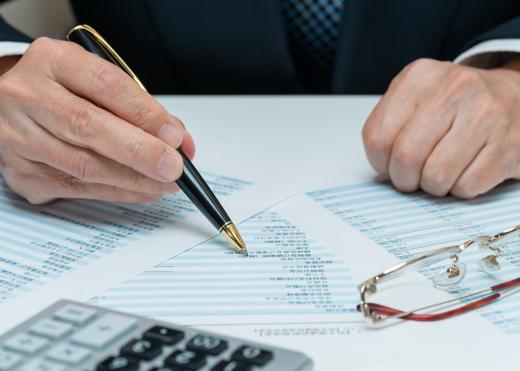At WiseGEEK, we're committed to delivering accurate, trustworthy information. Our expert-authored content is rigorously fact-checked and sourced from credible authorities. Discover how we uphold the highest standards in providing you with reliable knowledge.
What Is a Reverse Convertible Bond?
A reverse convertible bond is a bond that gives the issuer the right to change the bondholder's principal payment into debt or equity of an underlying company. This company is usually not the same as the company issuing the bond. These bonds are generally held for a short term and promise the investor high yields for the principal paid. Such high yields are necessary to compensate the investor for the risk that the price of the stock underlying the reverse convertible bond could fall to a point where, if the bond is converted, the investor would receive less than the original principal paid.
Most bonds are issued by institutions to investors who pay an initial principal payment for the right to receive regular interest payments and the eventual return of the principal. There is a type of bond known as a convertible bond which combines elements of the derivatives market with typical bond aspects. With a convertible bond, the investor has the right to change the bond to equity or debt at the end of the bond term, also known as the maturity date. By contrast, a reverse convertible bond gives the conversion rights to the issuer.

In a typical reverse convertible bond, the investor makes an initial principal payment and holds the bonds for a relatively short term, often just a few years or even less. The coupon rate, which is the percentage of interest on the principal to be returned to the investor in regular installments, is significantly higher than the rates attached to regular bonds. This is because the investor is taking on a risk attached to the potential price decline of the underlying stock.
It is typical for the issuer of a reverse convertible bond to have no direct relationship to the company of the underlying stock. In essence, the bond issuer has a something called a put option on this bond contract. This means that, if the underlying stock price falls to a certain level before the bond term expires, the principal of the bond may be converted to shares of the underlying stock. Should this occur, it is said that the option has been "knocked in," meaning that the option may be exercised.
Whenever a reverse convertible bond gets knocked in, the bondholder's investment may suffer as a result. The debt or equity he or she receives will often be significantly less than the principal amount paid for the bond. As a result, investors in this type of bond must always be rooting for the underlying stock to either rise or at least stay above the knock-in level.
AS FEATURED ON:
AS FEATURED ON:











Discuss this Article
Post your comments